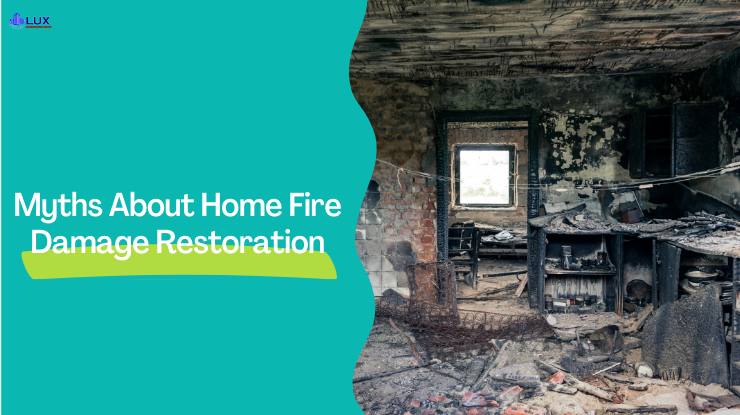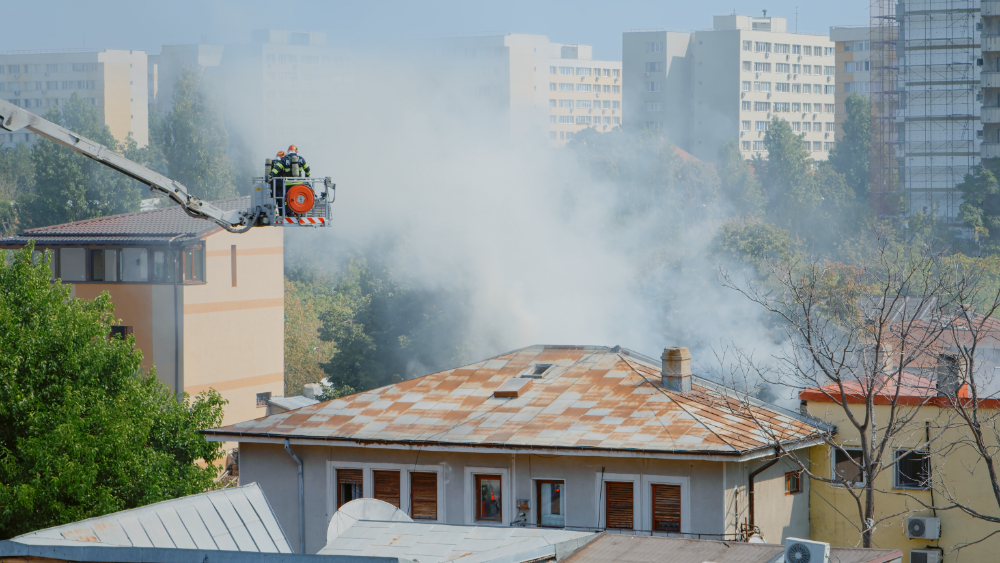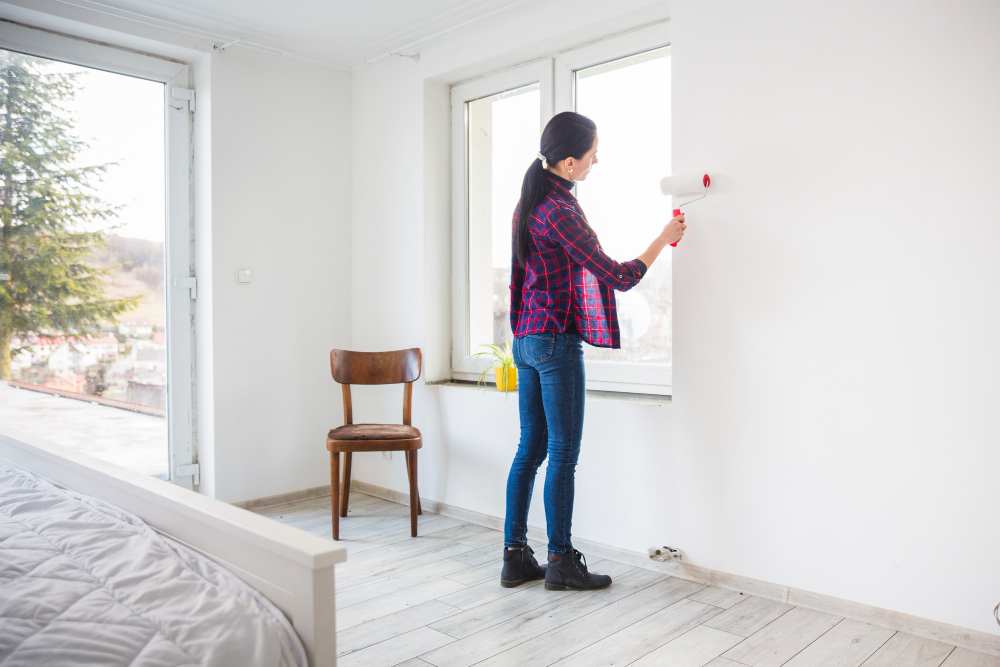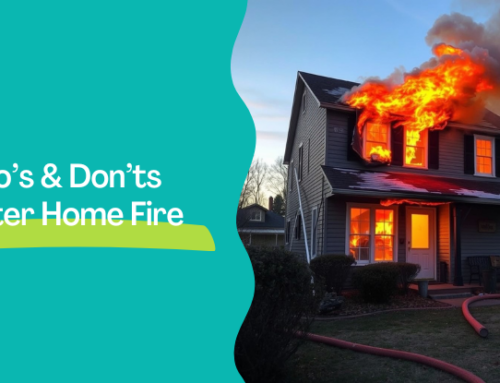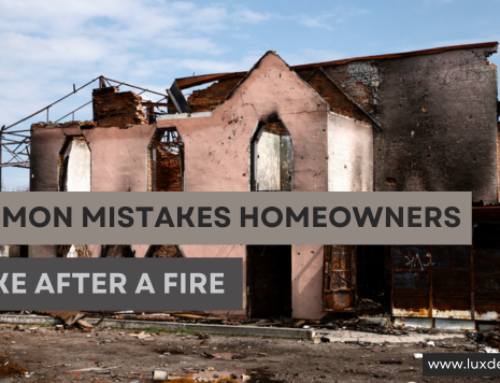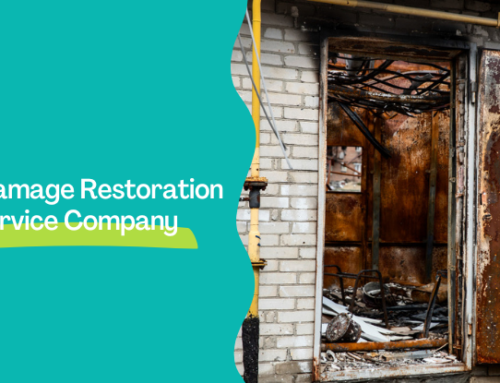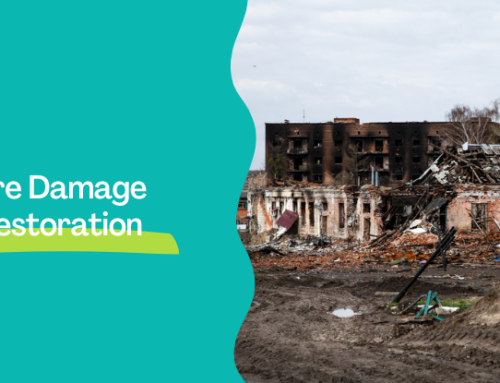Fire damage can feel overwhelming for any homeowner, especially in a bustling region like Los Angeles. Beyond the immediate worry about structural stability, many people struggle with what to salvage, who to call, and how to navigate insurance claims.
This article explores the real process behind fire damage restoration and uncovers the most common mistakes homeowners make after a fire. It breaks down popular myths, highlights proven recovery methods, and shows why expert guidance matters. You’ll learn how proper assessment, professional deodorization, and specialized techniques can bring a home back to life safely.
By understanding the facts about smoke mitigation, soot removal, and structural repairs, homeowners can avoid typical pitfalls and speed up the recovery process. In the end, it’s about rebuilding more than walls—it’s about restoring peace of mind. LuxDevla, one of the top construction companies in Los Angeles, brings essential local insight and practical steps to help you navigate this journey.
Contents
- Common Myths About Fire Damage Restoration
- Myth #1 – Everything Has to Be Thrown Away
- Myth #2 – Anyone Can Handle Restoration—Even a Handyman
- Myth #3 – The Smell of Smoke Will Eventually Go Away
- Myth #4 – Smoke and Soot Are Only Cosmetic Issues
- Myth #5 – You Can Just Paint Over Smoke Damage
- Myth #6 – Professional Restoration Is Too Expensive
- What Really Happens During Fire Damage Restoration?
- Initial Assessment & Safety Measures
- Soot and Smoke Removal
- Odor Elimination
- Salvage and Restoration of Belongings
- Structural Repairs and Rebuild
- Why Professional Restoration Is Non-Negotiable?
- What Can and Can’t Be Restored?
- Preventing Fire Damage and Being Prepared
- Final Thoughts – CTA LuxDevla
Common Myths About Fire Damage Restoration
Fire damage restoration often carries misconceptions that can slow down or complicate a homeowner’s path to recovery. By challenging these myths and understanding the real facts, you can save precious belongings, protect structural integrity, and prevent larger financial losses over time.
Myth #1 – Everything Has to Be Thrown Away
Not every fire-damaged item is destined for the trash, especially when professional cleaning and deodorizing processes are used.
Fire damage restoration company utilize advanced treatments like ozone chambers and specialized cleaning agents. These methods can salvage furniture, clothing, electronics, and even sensitive documents. In many documented cases, belongings once deemed “unusable” were restored to safe, functional condition through careful decontamination. This saves both costs and cherished memories.
Myth #2 – Anyone Can Handle Restoration—Even a Handyman
Fire restoration isn’t a one-size-fits-all job; certified experts bring specific training and industry-approved methods.
Improper handling can introduce mold growth behind walls, compromise structural elements, or invalidate insurance claims if guidelines aren’t followed. For instance, the Institute of Inspection, Cleaning and Restoration Certification (IICRC) and National Fire Protection Association (NFPA) set strict standards. Professionals who follow these guidelines reduce health risks, speed up insurance processes, and maintain a home’s structural integrity.
Myth #3 – The Smell of Smoke Will Eventually Go Away
Smoke odors can persist indefinitely if they penetrate deep into porous materials like insulation or upholstery.
Studies on smoke-damaged residences show that lingering particles embed in HVAC systems and wall cavities. Effective odor elimination often involves thermal fogging, ozone treatments, or hydroxyl generators. These technologies neutralize trapped odors at a molecular level, preventing them from resurfacing during warmer months or with changing humidity.
Myth #4 – Smoke and Soot Are Only Cosmetic Issues
Dark residue might look like a simple stain, but soot particles can contain toxic chemicals and even carry an electrical charge that causes corrosion.
Left unaddressed, soot can trigger respiratory issues, damage electronics, and corrode wiring behind walls. According to some environmental safety reports, soot contamination can linger on surfaces and in ventilation systems, affecting indoor air quality and posing health hazards for months or years.
Myth #5 – You Can Just Paint Over Smoke Damage
Painting over fire-affected walls without proper priming and sealing can lead to bleed-through stains, warped surfaces, and stubborn odors.
Even with multiple coats, untreated smoke residues can resurface. The correct procedure involves specialized cleaning, sealing primers, and odor barriers. Research indicates that a professional-grade sealant effectively locks in residual particles, ensuring a fresh, odor-free finish and better long-term protection.
Myth #6 – Professional Restoration Is Too Expensive
While restoration costs vary, insurance policies typically cover the bulk of fire damage repair expenses.
A side-by-side comparison often shows that the cost of professional restoration is far lower than full replacement of the structure and belongings. In many cases, insurance providers prefer certified restorers because properly salvaging materials reduces overall claims. By working with specialists who document each step, homeowners also avoid unexpected repairs down the road.
What Really Happens During Fire Damage Restoration?
Fire damage restoration usually follows a structured plan that addresses immediate hazards, removes harmful residues, and restores both the property and personal belongings. It involves expert assessments, specialized equipment, and proven techniques to ensure a home is safe, clean, and livable again.
Initial Assessment & Safety Measures
A thorough assessment is the first step, where certified professionals document damage for insurance purposes and check for hidden risks.
They inspect the building’s structural integrity, electrical wiring, and gas lines. This stage often involves turning off utilities to prevent further issues. According to fire safety data, rapid assessment significantly reduces secondary damage by catching structural weaknesses early. Specialists then set up secure boundaries, ensuring no one is exposed to loose debris or unseen hazards.
Soot and Smoke Removal
Soot and smoke cling to surfaces, seep into cracks, and linger in the air if not removed correctly.
Professionals employ negative air pressure systems to confine contaminated particles, use HEPA-grade filtration to capture tiny soot fragments, and apply chemical sponging to lift stubborn residues. Studies show that proper soot extraction significantly lowers the risk of long-term respiratory problems and costly damage to electronics.
Odor Elimination
Embedded smoke odors require more than just airing out the space.
Advanced deodorization techniques, such as hydroxyl generators or ozone treatments, break down smoke molecules at the source. Thermal fogging is another method that reaches into porous materials, ensuring the smell doesn’t return later. Some restoration projects combine multiple methods for maximum effectiveness, supported by data that highlights a 90% reduction in persistent odors when these technologies are used together.
Salvage and Restoration of Belongings
Many items, from family heirlooms to everyday electronics, can often be saved through specialized treatments.
Ultrasonic cleaning removes soot from metals and ceramics by using high-frequency vibrations in a cleaning solution. Freeze-drying techniques rescue water-damaged papers and photos without causing further harm. Fire restoration experts also employ textile sanitization to remove smoke particles from clothing and fabrics, a process proven to eliminate up to 99% of embedded contaminants.
Structural Repairs and Rebuild
Repairing or replacing damaged roofing, walls, and HVAC systems is essential for returning the home to its original condition.
Experts handle drywall replacement, framing reinforcement, and HVAC duct cleaning to remove hidden smoke residue. Recent industry surveys highlight that swift structural repairs can cut overall restoration costs by as much as 25%. By following local building codes and guidelines, professionals ensure a safer, more resilient home going forward.
Why Professional Restoration Is Non-Negotiable?
Fire damage often extends far beyond what meets the eye, and attempting restoration without certified help can lead to hidden hazards.
Professional restorers work under guidelines established by recognized organizations like the IICRC (Institute of Inspection, Cleaning and Restoration Certification) and NFPA (National Fire Protection Association). By following these protocols, they guarantee thorough cleanup, proper air quality control, and seamless collaboration with insurance providers.
In terms of time efficiency, research shows that certified pros can cut the overall restoration timeline by up to 40%, thanks to specialized tools and streamlined methods. They know how to handle toxic residue, secure structural integrity, and minimize secondary damage risks. This ensures not just a quicker recovery but also better long-term safety for occupants.
What Can and Can’t Be Restored?
Certain materials withstand fire damage more effectively, while others deteriorate beyond repair. Understanding this distinction saves you time, money, and frustration during the recovery process.
Hardwoods, ceramics, and metals often retain their integrity, allowing restoration experts to use professional cleaning solutions or ultrasonic treatments to remove soot and odor. According to multiple industry case studies, electronics with minimal smoke exposure may also be salvaged after detailed inspections and specialized cleaning.
In contrast, porous materials such as insulation or drywall heavily laden with soot particles typically cannot be restored. Research shows that even small amounts of hidden residue can compromise indoor air quality. Melted plastics are another category that often becomes a permanent loss, mainly due to structural distortion and chemical contamination risks. It’s best to consult fire restoration professionals who use modern testing methods to decide whether an item is truly salvageable.
Preventing Fire Damage and Being Prepared
Staying one step ahead of potential fire risks is far simpler than rebuilding after a disaster. By conducting home fire safety checks and having a clear emergency plan, homeowners dramatically lower their chances of facing severe fire damage.
Electrical safety audits often catch outdated wiring and overloaded circuits before they spark. Proper storage of flammable materials, such as chemicals and cleaning agents, removes hidden ignition risks. Statistics indicate cooking incidents cause around half of residential fires, making fire-resistant oven mitts and vigilant supervision indispensable. Interconnected smoke detectors can alert multiple parts of the home at once, and sprinkler systems help contain flames before they spread. Many families also practice escape drills and keep emergency numbers handy, ensuring everyone knows exactly what to do under stress. By blending technology with good habits, you’re better protected and far more prepared in the event of an emergency.
Final Thoughts – CTA LuxDevla
Understanding the true scope of fire damage—beyond the visible ash and debris—allows homeowners to make informed decisions. Myth-busting plays a big part in choosing safe, effective solutions. Professional assessments, specialized cleaning methods, and ongoing preventive measures can fully restore a property and protect your well-being.
If you’ve experienced a fire or want to fortify your home against future risks, LuxDevla, one of Los Angeles’ top construction and restoration companies, can give you complete guide of fire damage restoration. From the initial inspection and insurance documentation to the final rebuild, our team ensures that no detail is overlooked. We’re committed to helping you restore not just your property, but also your peace of mind.

